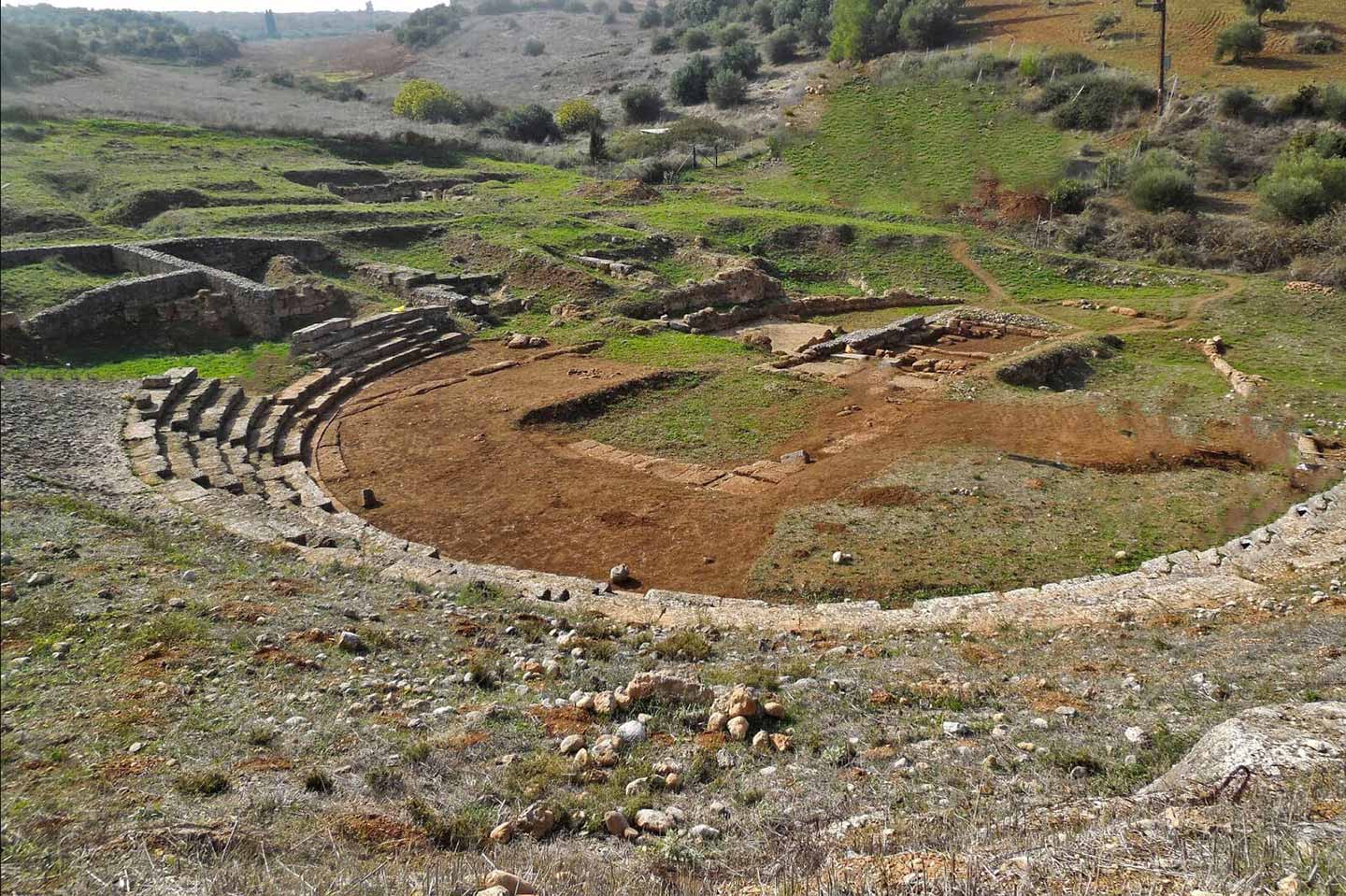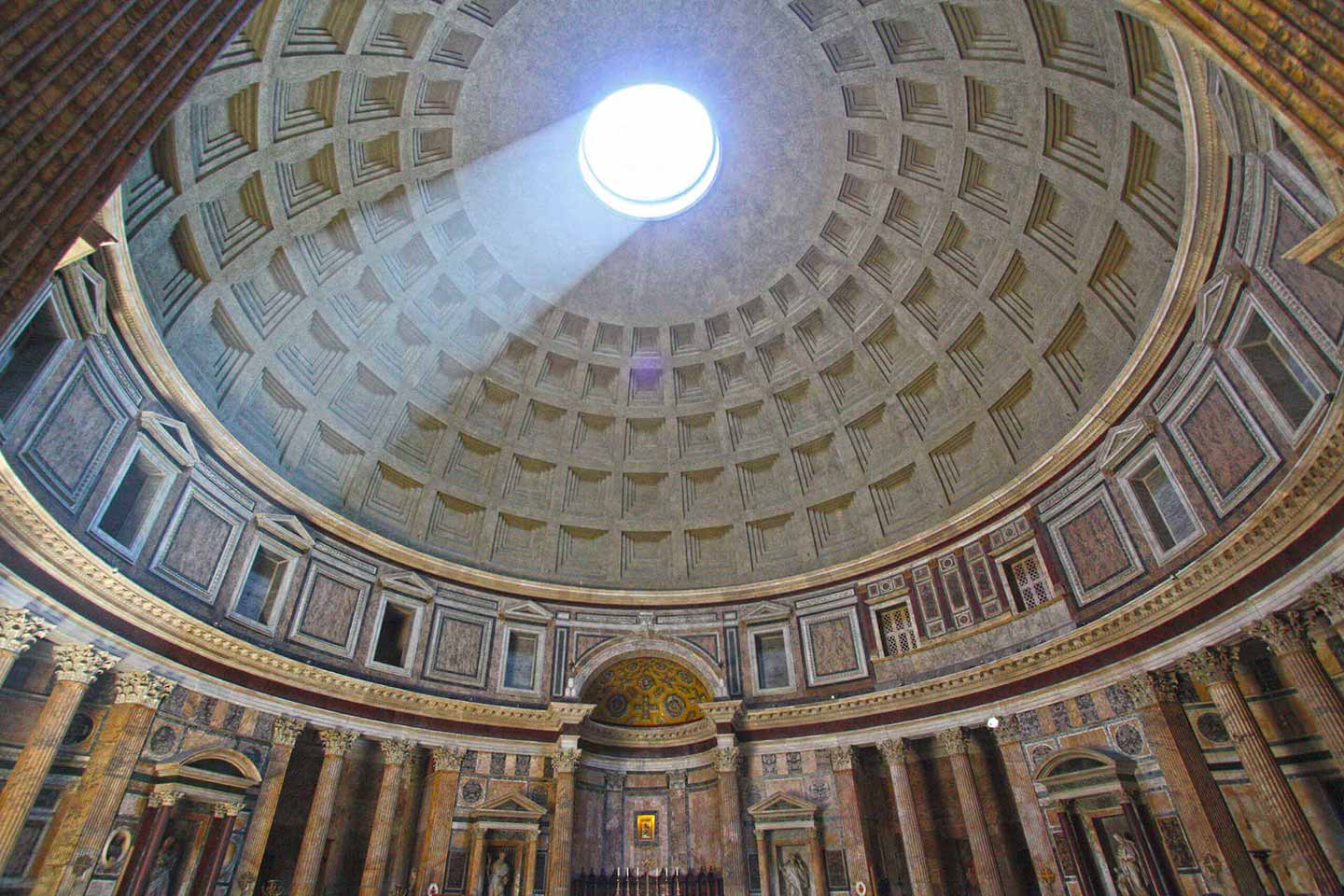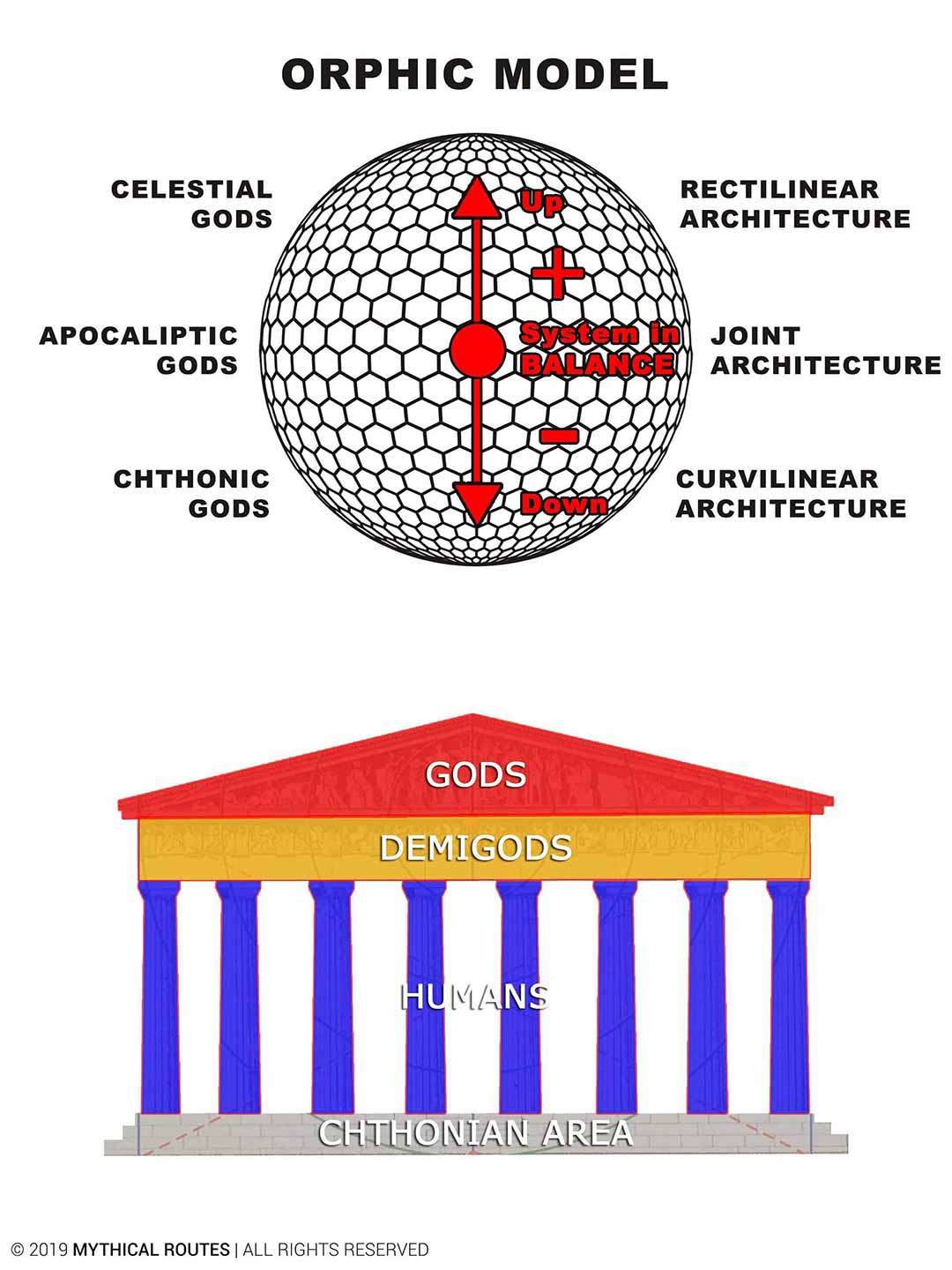
As we mentioned, the Mysteries of the Cabeiri are much older than the ones of the Orphics. The cult, however, was also widespread in mainland Greece, and one of its centers was the sanctuary of the Cabeiri near Thebes. This cult was associated with that of Demeter the so-called "of the Cabeiri" and used, as opposed to the Orphics, the curvilinear architecture above the ground. Despite this, the worship of the Cabeiri is incorporated into the Eleusinian Mysteries (read here). The cult of the Orphics is Heliocentric (Apollo), the cult of the Cabeiri, on the other hand, is Geocentric (Gaia). Another important difference was that in the Eleusinian Mysteries the initiates had to speak the Greek language, while in the Cabeiri Mysteries anyone could be initiated, Greek or foreign. The geocentric system was supported by Aristotle who with his prestige also influenced the opinion of the Christian world against Aristarchus from Samos, who was accused in 286 B.C. and was forced to flee to Alexandria. While Plato covertly accepted the Heliocentric theory of the Orphics.
This cult is introduced to prehistoric Rome in 1300 B.C. through the Etruscans and, according to Herodotus, comes from a region of northwestern Turkey, Lydia. In Caria, there was a town named Cabera. Of all religious centers of antiquity, most inscriptions of the Roman period were found in Samothrace, where the Roman pilgrims were numerous. Samothrace was considered by the Romans to be a National Sanctuary because they believed that the gods of Rome came from there, where they had arrived from Troy. These gods were brought to Rome by Aeneas who, according to the legends of the Romans, founded Rome. This is the reason the Romans preferred the initiation of Samothrace, into the Cabeiri Mysteries rather than the Eleusinian. Marcellus, Cicero, Ouarrchon, and Hadrian are some of those who visited the island of Samothrace and were initiated to the Cabeiri Mysteries.
So then, based on the above, namely the intervention of the Romans, the Orphic logic of Delphi started to change, all of the curvilinear structures of the Underworld, the arc the arch and the dome began to be released and to rise to the surface.

All that we have mentioned in the article "Celestial and Chthonic - Sacred Architecture" is a time-spanning process, so that the religious template is clearly defined and the entire Pantheon of the Greeks becomes accepted by the believers and encompasses upwards, but also downwards. Based on everything mentioned in the 1st Part of the book "Holy Sacramental Journey to Greece", we observe that the above logic corresponds to the religious template we described with the chthonic and celestial gods and is about the Mythology of the Titanomachy and the Gigantomachy.
In this Mythology of Duality, the concepts of "attraction" are incorporated, because it is about the relationship between opposing forces, where one is connected with the other, but also "repulsion", which is the result of the clash of said forces. If however one of these forces is abolished, the logic of "universal attraction" is lost, resulting in the chthonic powers not cooperating with the celestial ones.

In the above image, we observe the logic of the Orphic template, as forces positive (+) and negative (-), which were in balance. With the abolition of the negative force, the system will create an upwards tension, resulting in the Basilica becoming a Domed Basilica (Celestial Dome) during the Christian period. Through this logic, we realize how complete the Orphic worship was.
When then in 17 B.C. Emperor Augustus abolished the chthonic gods for political reasons and later on, during the Christian period, it was forbidden for people to associate themselves with chthonic forces, two basic problems started to emerge:
On the one hand issues of occultism and witchcraft started to emerge because the Christian cult did not include the chthonic forces like the Orphic one, which troubled and still troubles mankind, reaching to the extreme cases of the "Holy Inquisition".
On the other hand, the concept of "universal attraction" was lost and these consequences will become evident in science. There was a period of 1.659 years until the time of Newton (1642-1727 A.D.), for the law of universal attraction to be discovered.